AITA for refusing to give “back” a gift that my boyfriend’s daughter (13) had already refused to accept?
Navigating the blended family dynamic can be a real minefield—especially when it comes to gift-giving. In this case, the post centers on a dilemma involving a gift that was initially offered with good intentions. The narrator, a woman dating a man with two daughters, recounts how she purchased matching necklaces for both children during a Christmas visit.
While the 10‑year‑old embraced her gift with delight, the 13‑year‑old flatly refused hers. Later, when the teenager changed her tune and demanded the necklace back, the narrator stood her ground. This incident raises the question: Is it wrong to refuse to return a gift that was already rejected?
Family relationships, particularly in blended families, are fraught with miscommunication and mixed expectations. The narrator’s decision not to “give back” a gift that was once spurned was meant as a boundary—a way to signal that actions have consequences. But did this come off as too harsh, or was it simply a justified stance against being taken for granted? Let’s break down this complicated scenario and examine whether the narrator’s approach was reasonable.
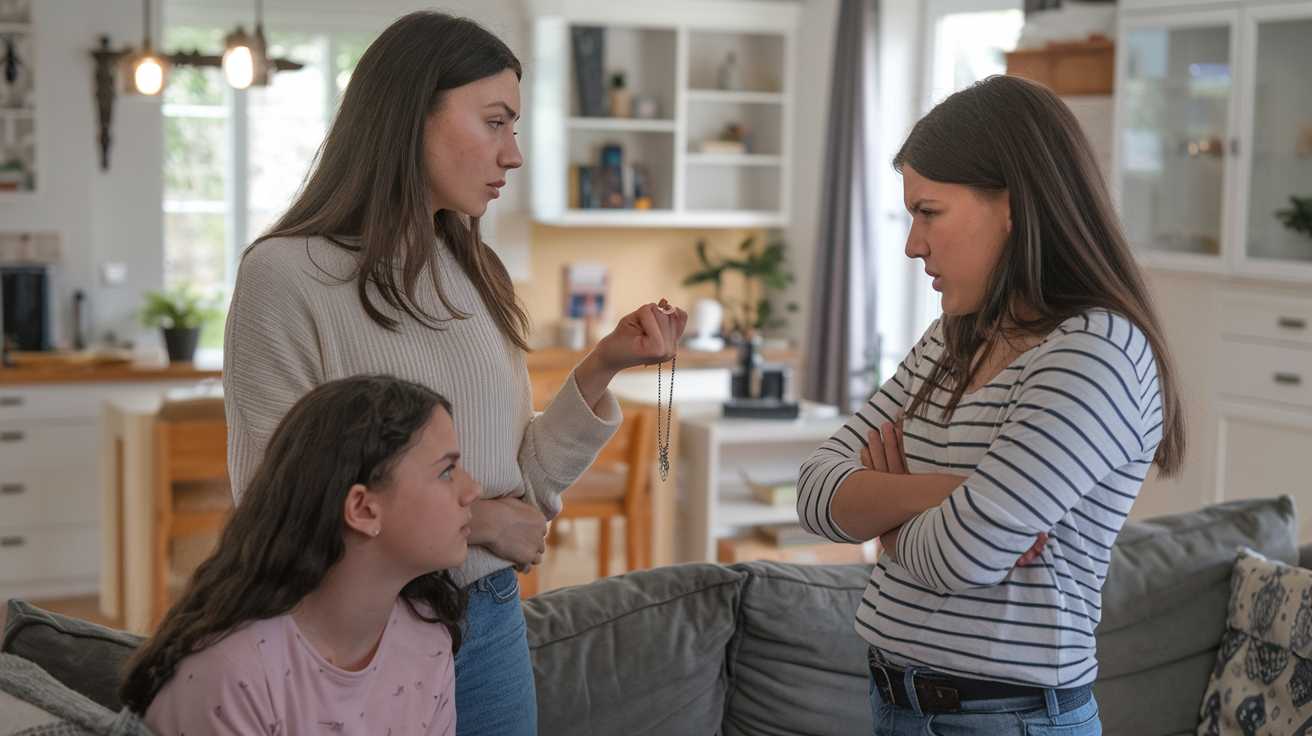
‘AITA for refusing to give “back” a gift that my boyfriend’s daughter (13) had already refused to accept?’
For the full context of the story, including details about the initial gift-giving and the subsequent fallout, refer to the original Reddit post.

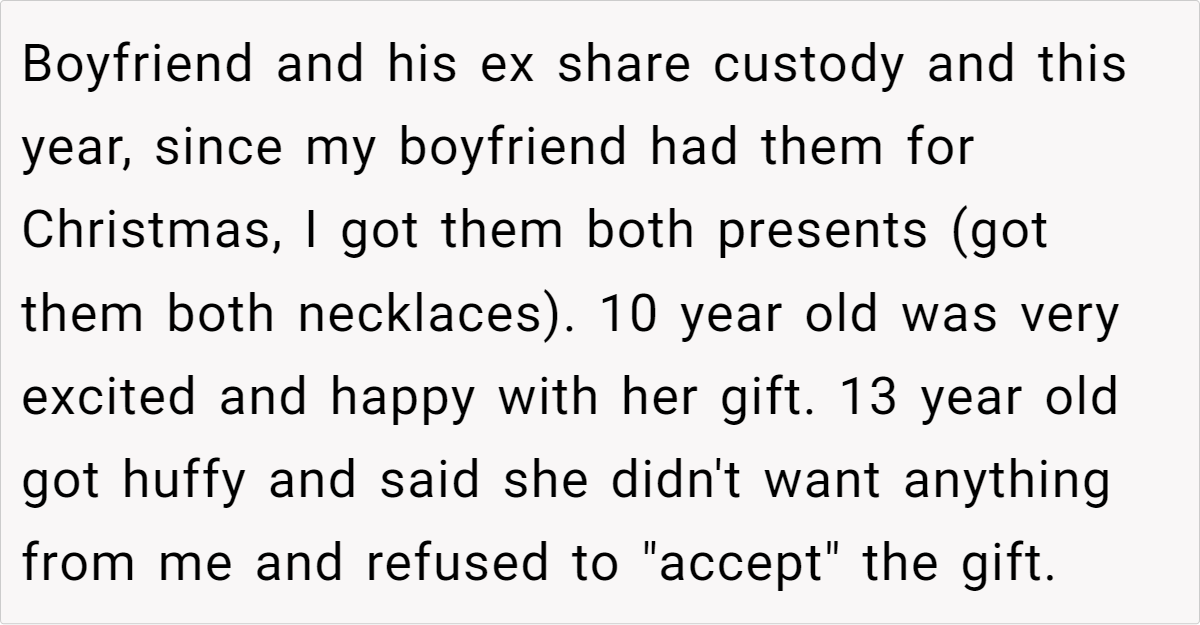
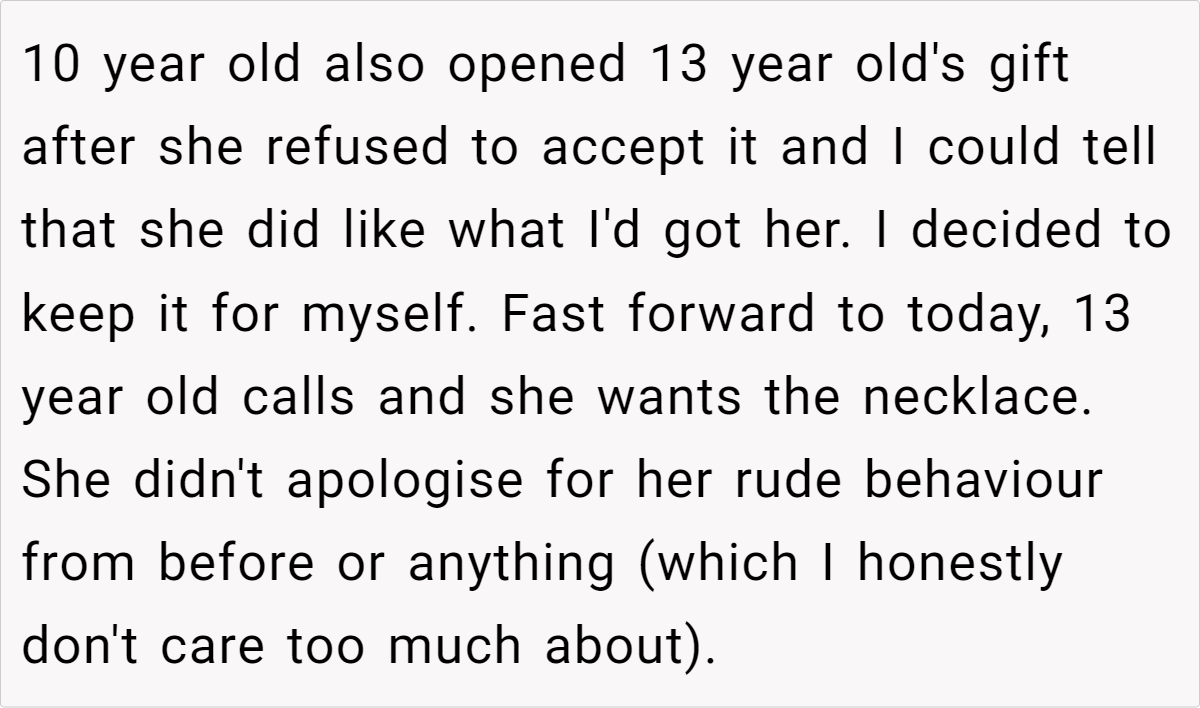
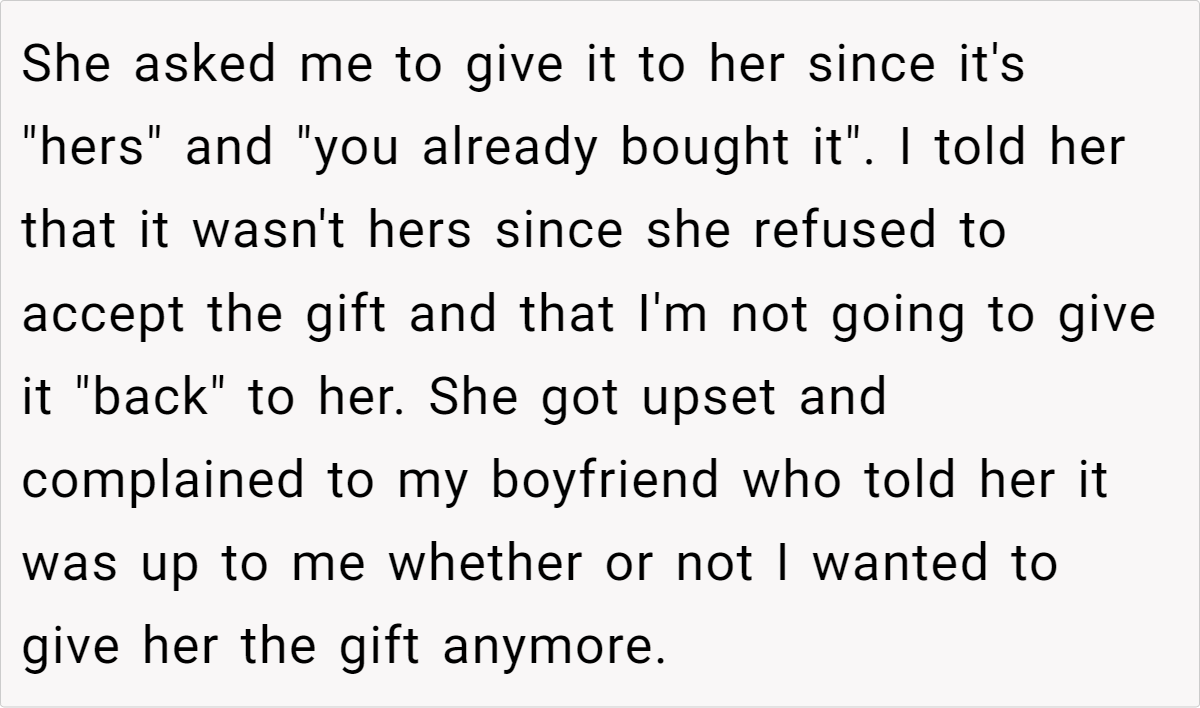
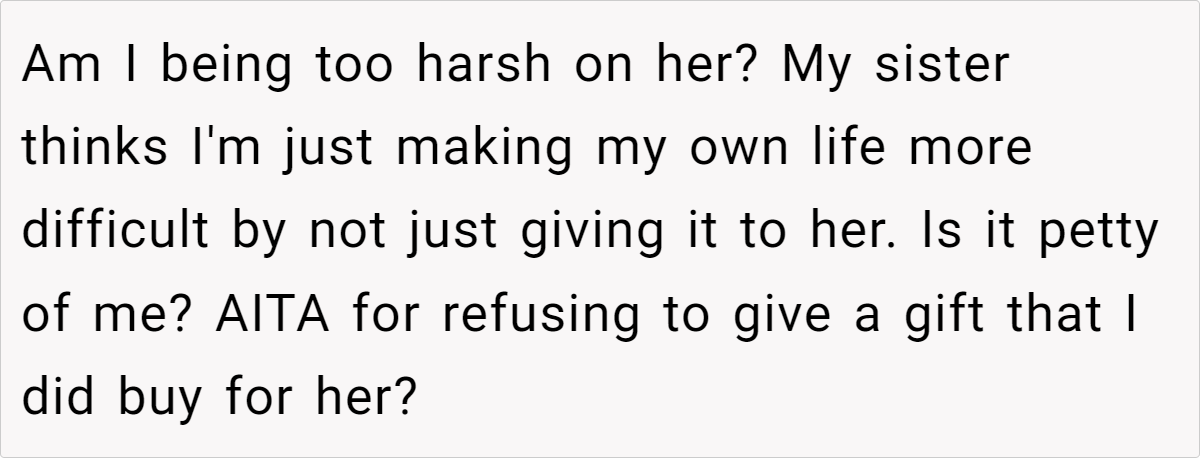
The post details the sequence of events: a well-intended gift for a child, the rejection of that gift, and later demands to reclaim it—all set against the backdrop of a challenging stepfamily dynamic.
When blended families face conflicts over gifts and boundaries, clear communication is crucial. Relationship expert Dr. Ramani Durvasula once said, “Respect in relationships is built on clear boundaries and honest communication.” In this situation, the narrator’s decision not to return the necklace was an attempt to enforce a boundary. By refusing to give the gift back after it had already been declined, she underscored the idea that one’s actions have consequences. This kind of boundary-setting is vital in any relationship, especially where trust and respect are at stake.
Understanding a teenager’s mood swings and evolving attitudes can be challenging. Adolescence is a time of conflicting emotions and identity exploration. Experts note that teenagers might initially reject gifts or gestures as part of a broader expression of their independence. However, when they later demand what they once spurned, it can signal inconsistency in their behavior.
Dr. Durvasula’s advice often stresses that adults in these relationships must remain consistent with their boundaries. By holding firm, the narrator may be offering a learning opportunity—demonstrating that words and actions have weight, even in the early stages of a relationship.
Blended family dynamics also require an element of mutual respect. Family therapist Dr. Jenn Hardy explains, “Establishing respectful interactions early on helps lay the foundation for long-term relationships in stepfamilies.” The narrator’s reluctance to simply hand over the necklace was not about pettiness—it was about preserving her dignity and setting a precedent.
When a gift is initially rejected, it implies that the recipient did not value the gesture at that time. Reclaiming the gift later, without acknowledging the original refusal, can be seen as an unfair reversal. This imbalance, if left unaddressed, may undermine future attempts at building trust and affection.
Finally, it’s essential to consider that relationships in blended families often evolve slowly over time. A measured approach that includes open dialogue can help bridge the gap between differing expectations. While some argue that the narrator could use this moment to mend fences with the 13‑year‑old, it’s also valid for her to maintain a firm stance.
Dr. Hardy advises that adults should model accountability and consistency, even if it means facing short-term discomfort. In this case, the narrator’s decision reflects a desire to maintain her principles while gradually working toward a more respectful relationship in the long run.
Here’s the input from the Reddit crowd:
Here are some hot takes from the Reddit community—raw, candid, and varied in perspective.
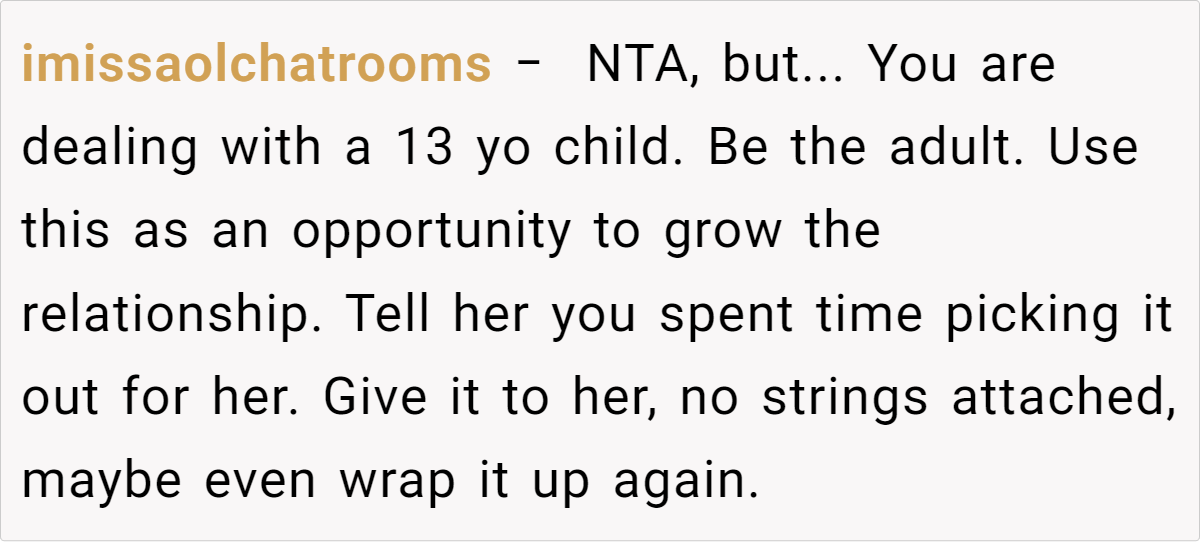
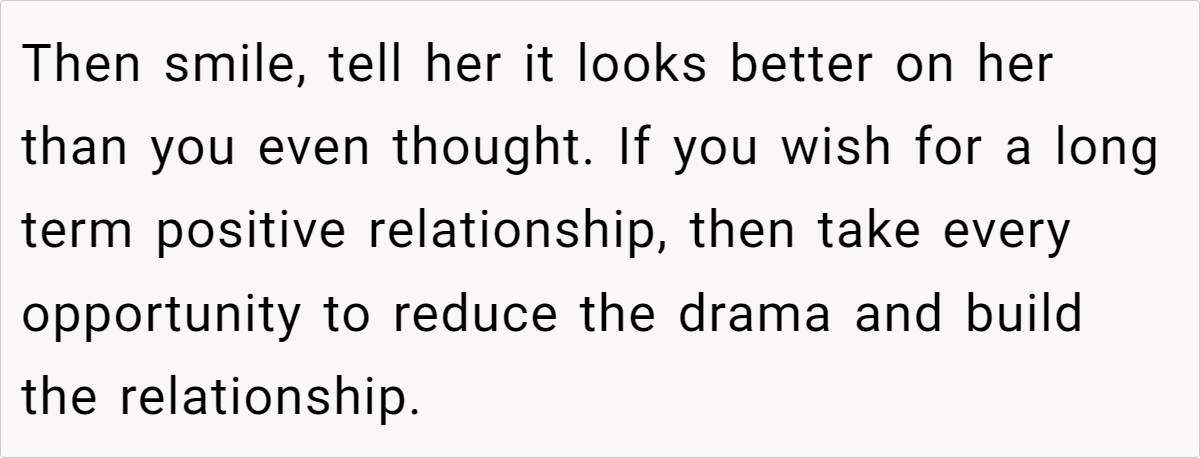
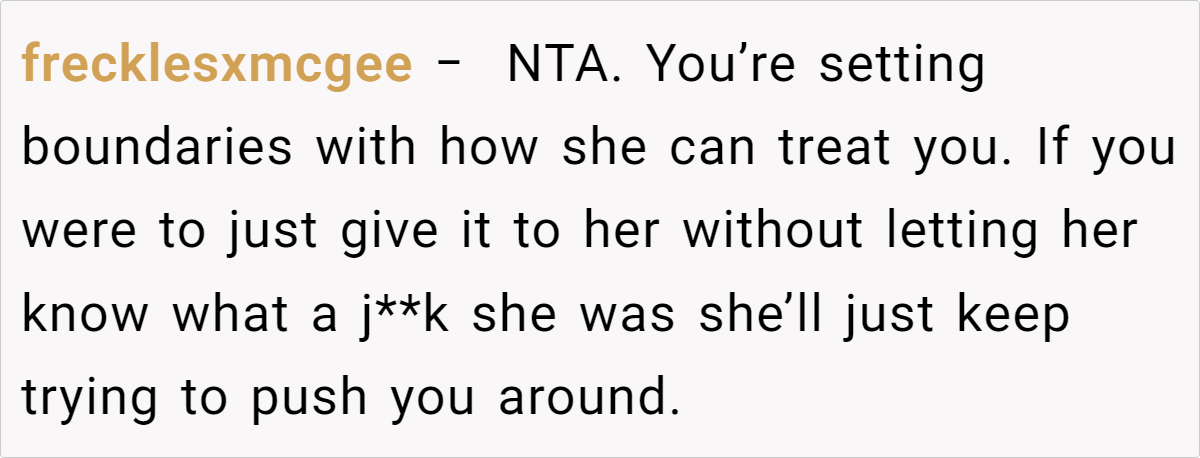
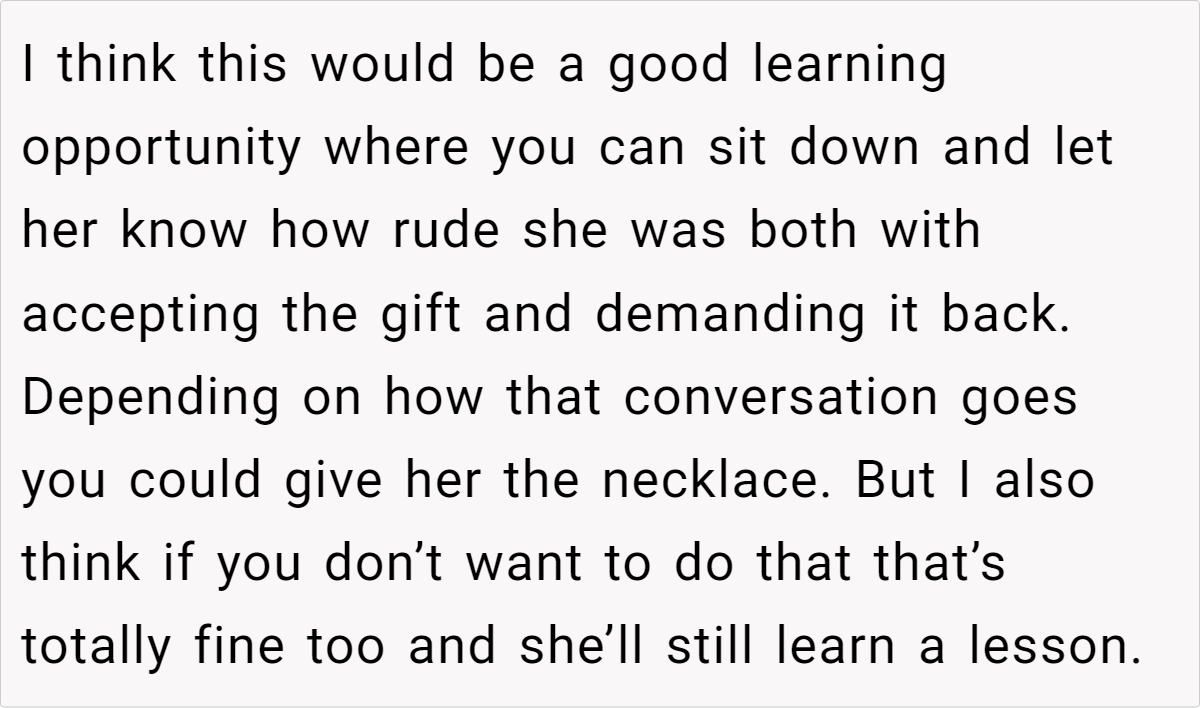
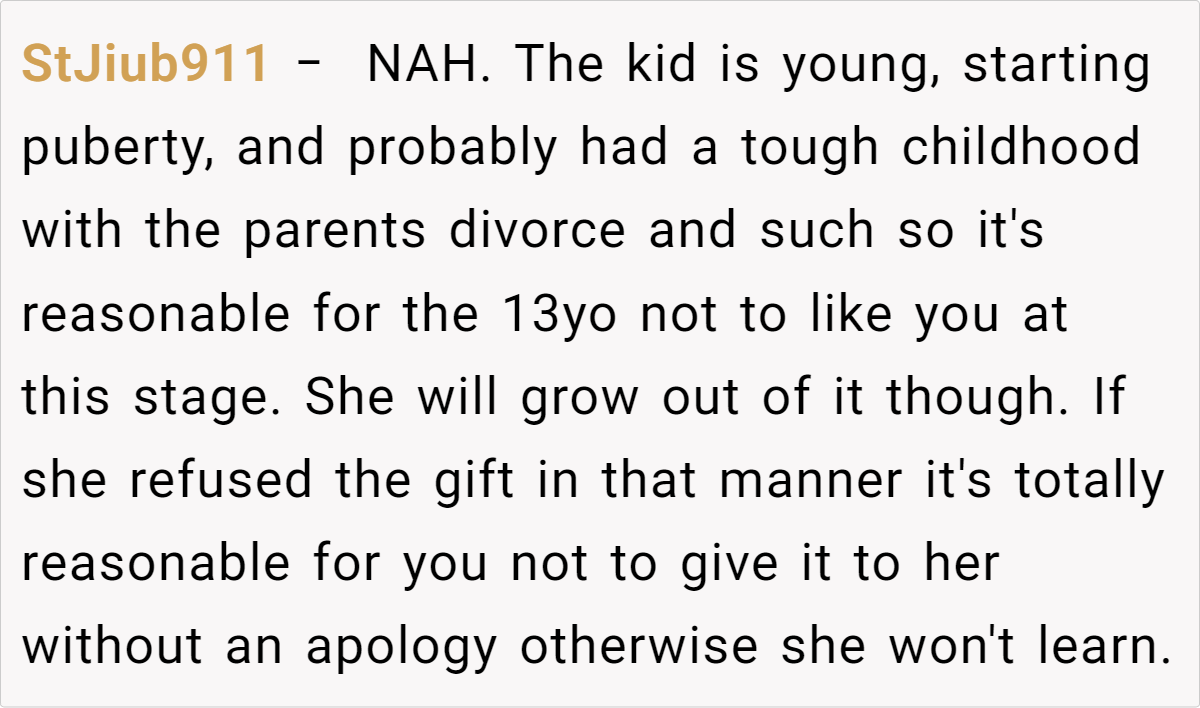
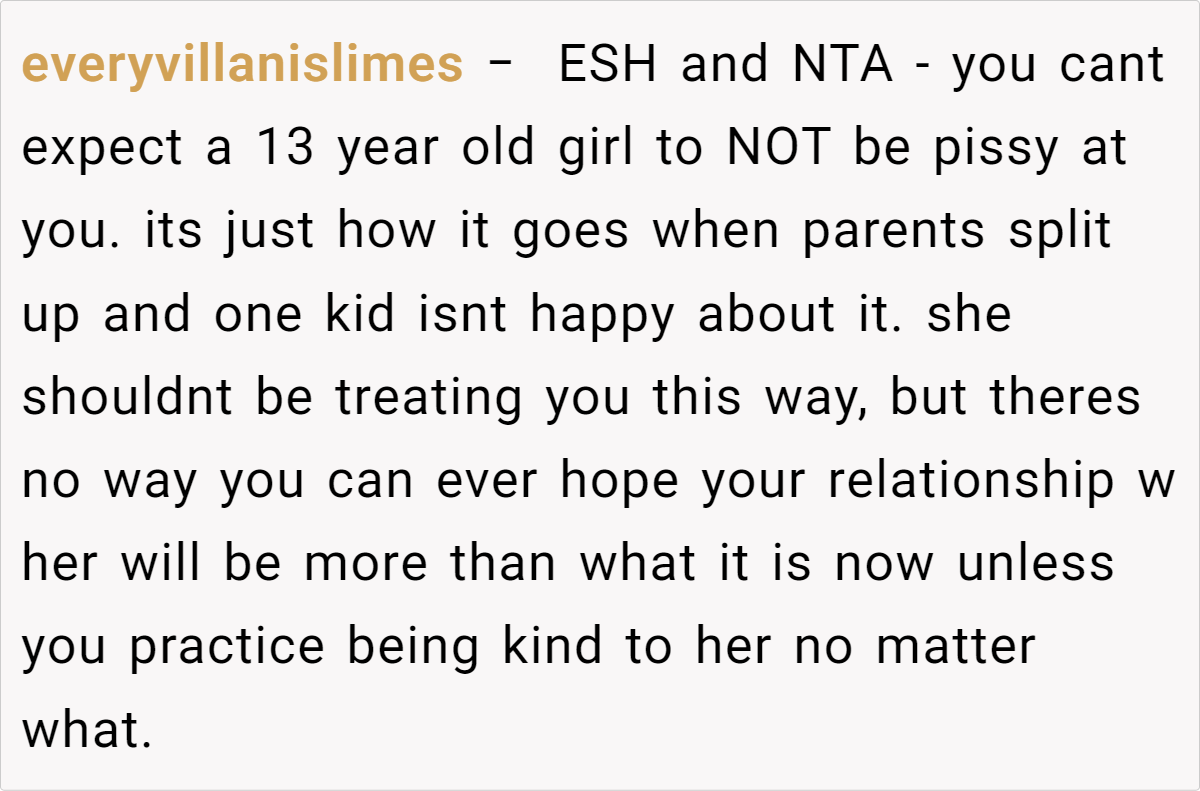
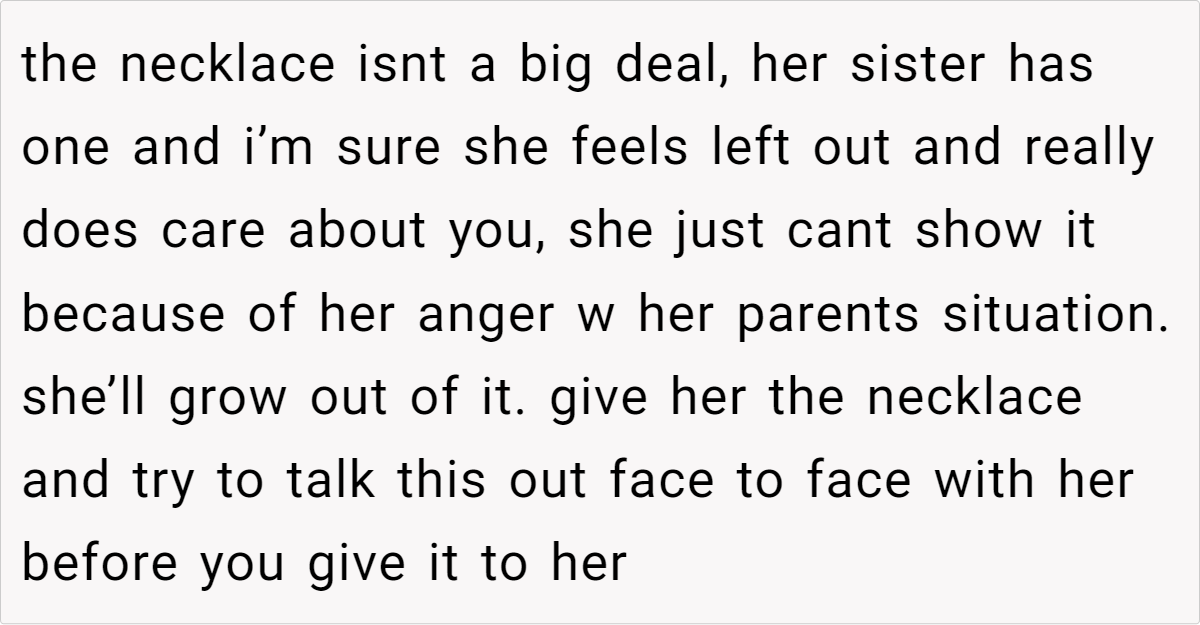

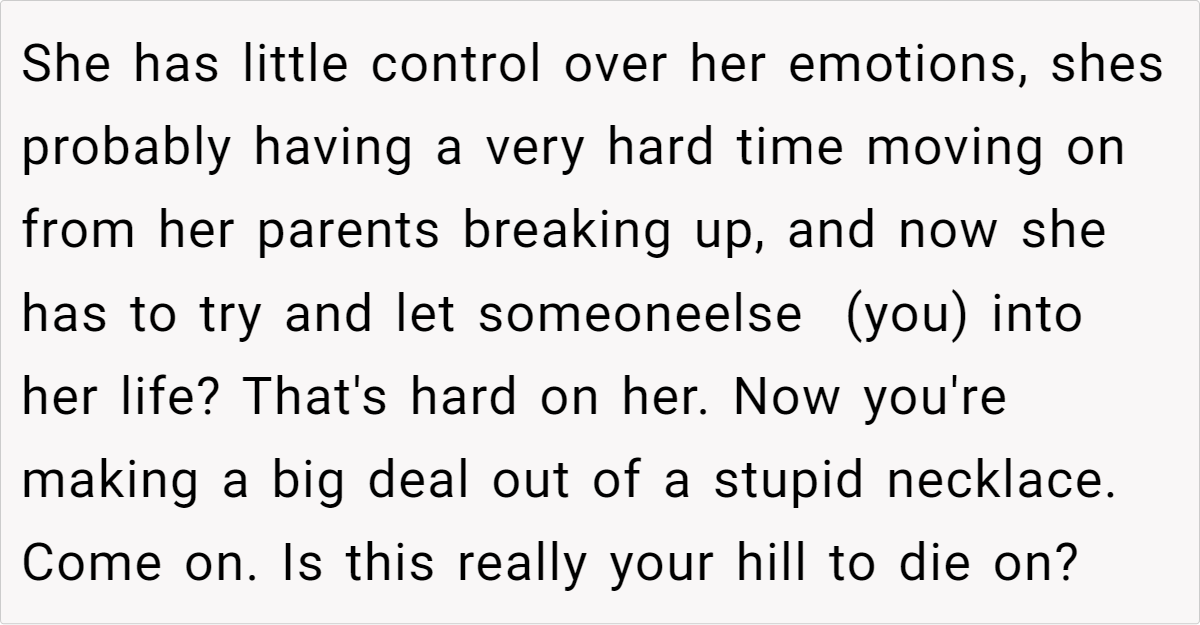
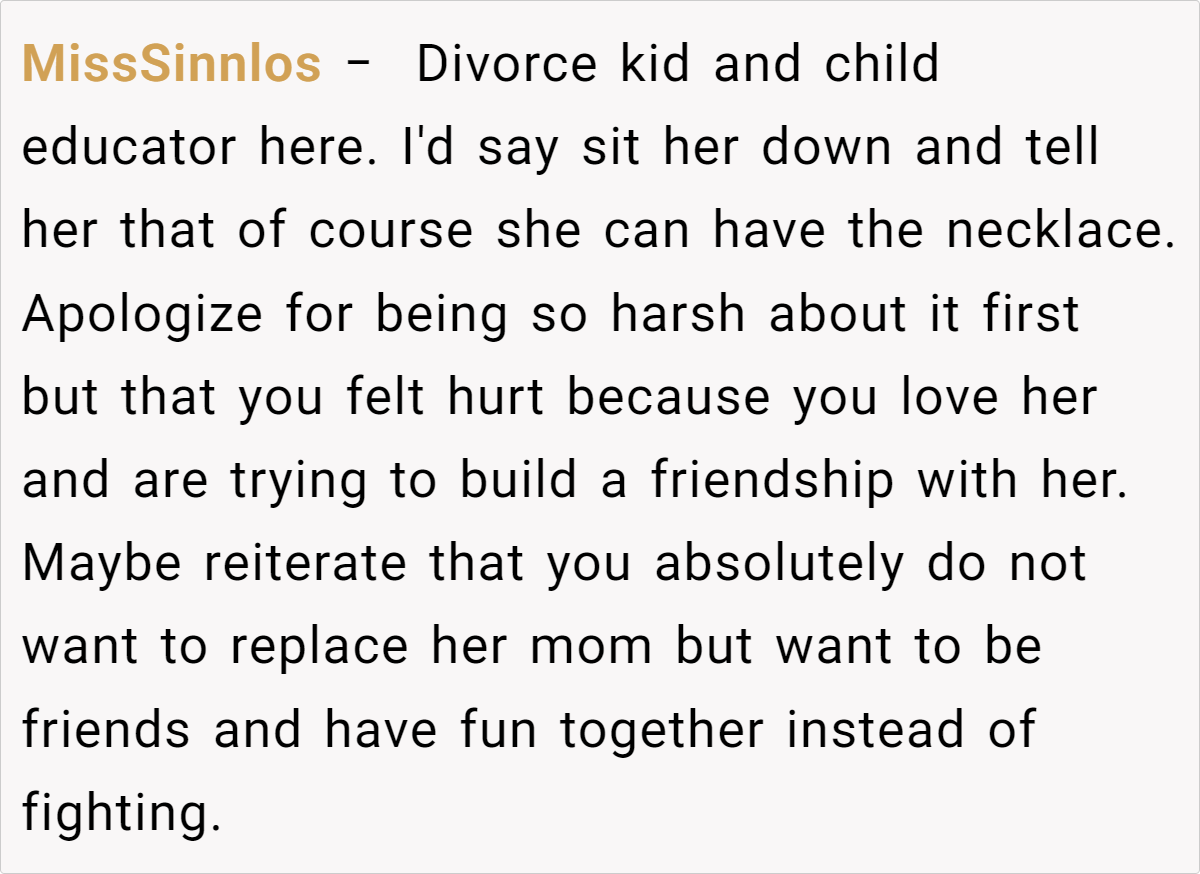
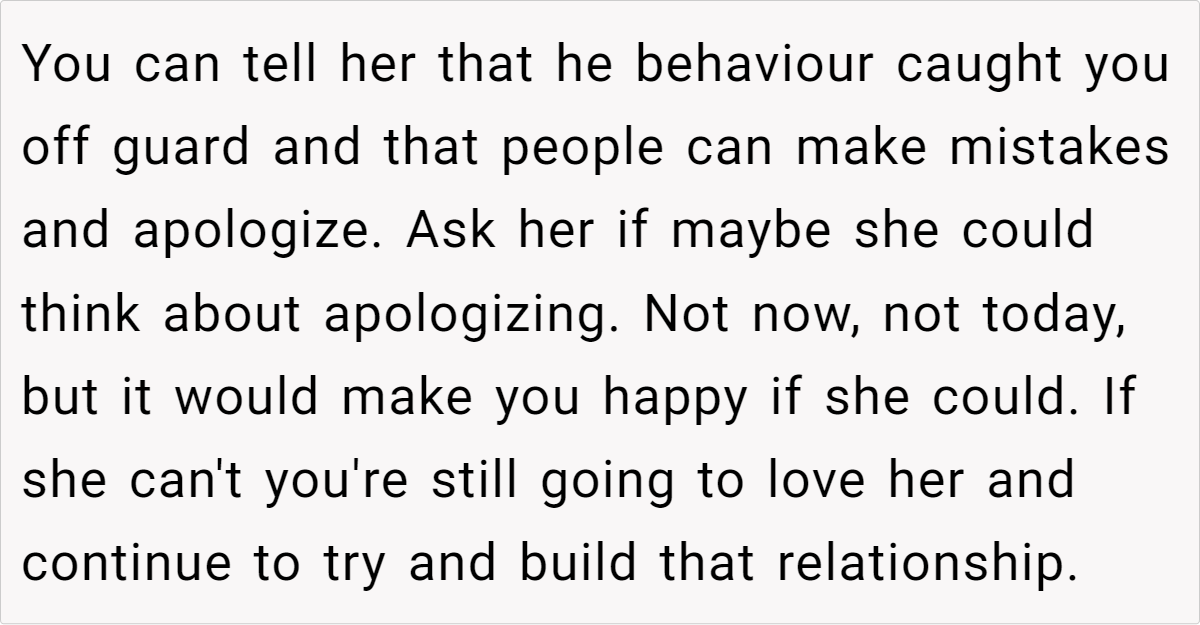
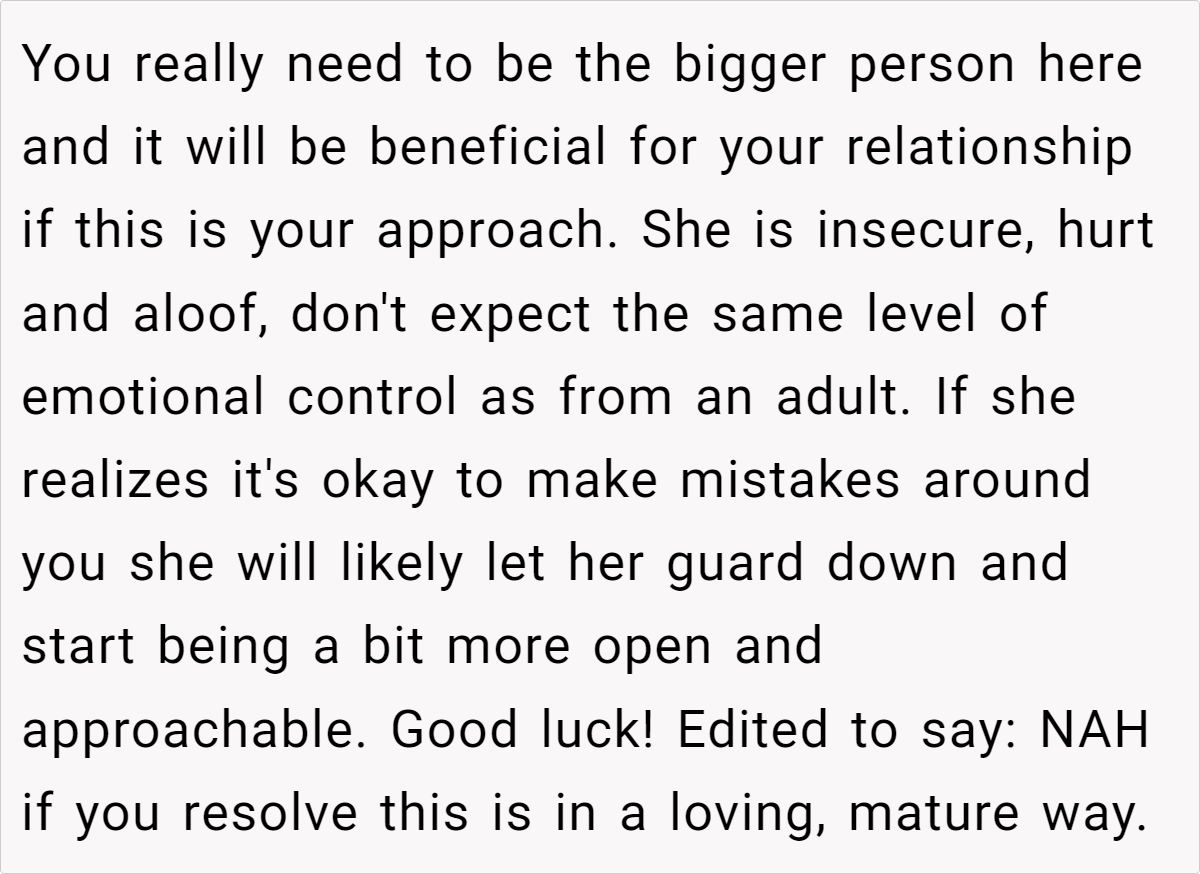

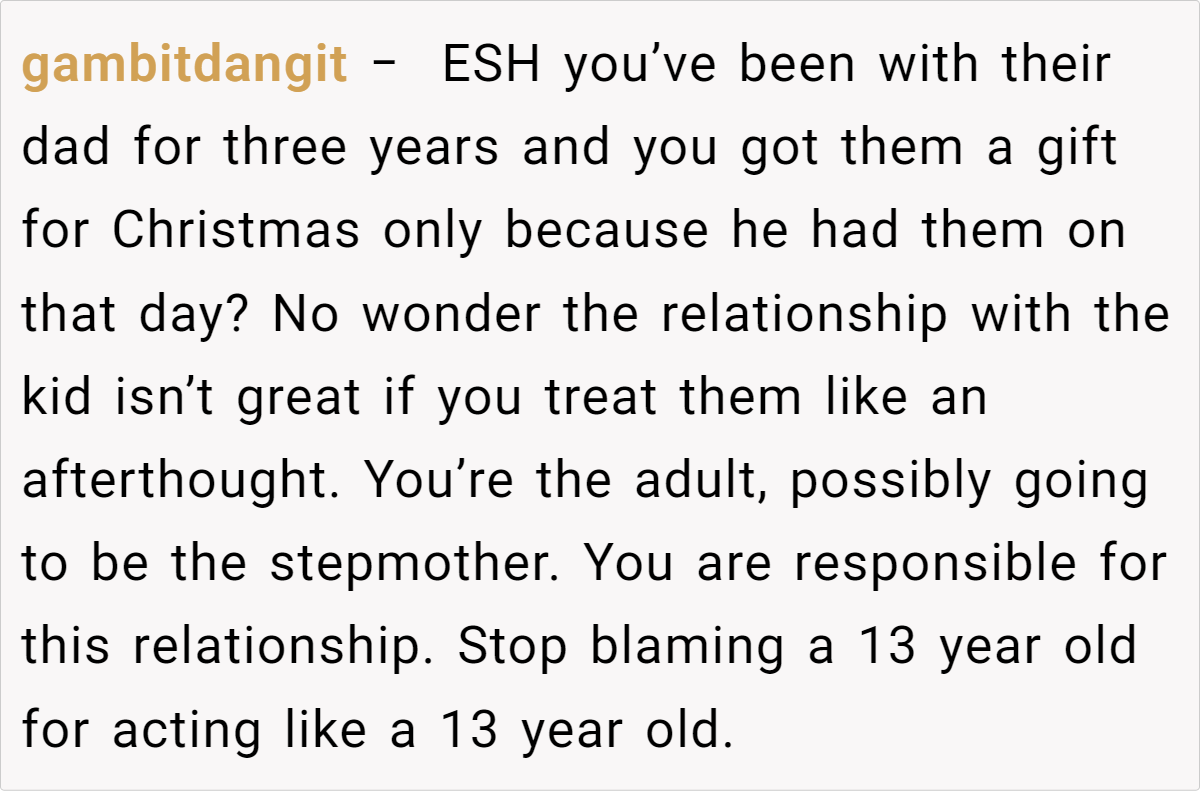

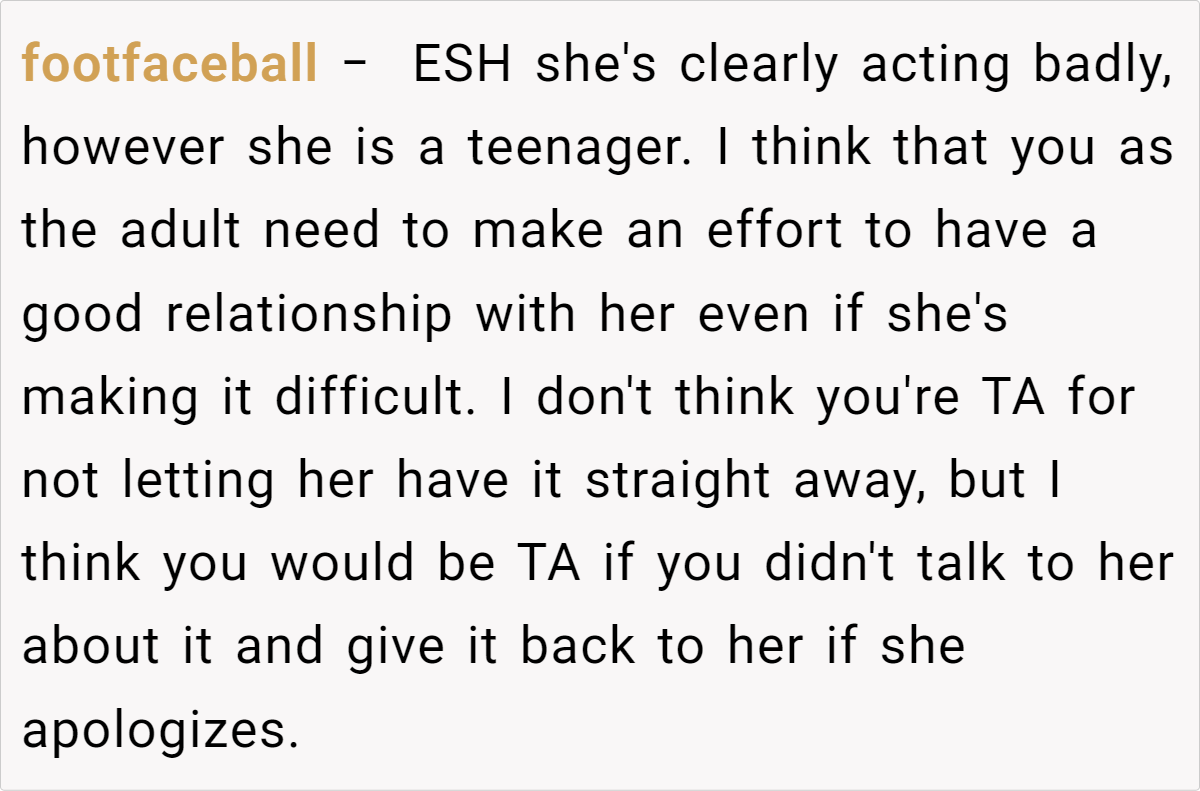
Some commenters applaud the narrator for setting clear boundaries, arguing that she is teaching the 13‑year‑old a valuable lesson about accepting consequences. Others suggest that this moment could be used as an opportunity to foster a better relationship by extending an olive branch—perhaps by discussing her feelings and acknowledging that teenagers can be inconsistent. The opinions range from “not the asshole” to “could have been handled more gently,” reflecting the complex nature of blended family relationships.
Ultimately, this story isn’t just about a necklace—it’s about navigating the delicate balance between setting personal boundaries and building a positive, respectful relationship with a stepchild. The narrator’s refusal to return the gift is a stand for accountability, yet it also raises the question of whether a more compassionate conversation might have smoothed over tensions.
What do you think? Should adults in blended families use these moments as strict boundary-setting opportunities, or is there room for more flexibility in building trust? Share your thoughts and experiences below—let’s open up a conversation on how best to handle these complex family dynamics.

